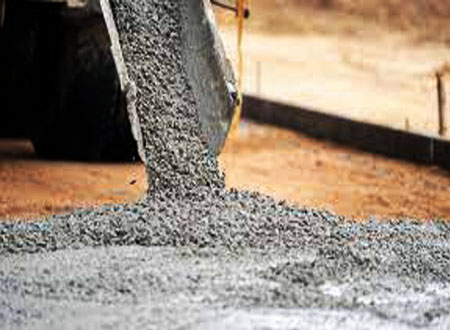Use Chemical Admixtures to Improve Concrete Performance
Apart from cement, water, and aggregates, chemical admixtures are other important ingredients of concrete that are used to improve concrete quality, manageability, and acceleration or retardation of setting time. The properties that are commonly modified by using admixtures are the heat of hydration, accelerated or retard setting time, workability, water reduction, dispersion and air-entrainment, impermeability, and durability factors. There are two types of admixtures, viz., chemical admixtures and mineral admixtures. Accelerators, Retarders, Water-reducing agents, Superplasticizers, Air entraining agents, etc. are the commonly used chemical admixtures. Fly-ash Blast-furnace slag, Silica fume, and Rice husk Ash are examples of mineral admixtures.
The chemical admixtures are used for the following purposes:
· Admixtures can be used to delay the chemical reaction that takes place when the concrete starts the setting process. These admixtures are used in concrete pavement construction which allows more time for finishing concrete pavements.
· Sometimes admixtures are used to improve concrete’s resistance to severe frost action or freeze/thaw cycles. Such admixtures also provide high resistance to cycles of wetting and drying.
· Some admixtures act as water reducers and when added to concrete can create a desired slump at a lower water-cement ratio than what is normally designed. Such admixtures are used in bridge decks, low-slump concrete overlays, and patching concrete.
· Calcium chloride is often used as a concrete accelerator which can help the rate of concrete strength development or reduce concrete setting time.
· Superplasticizers are a special type of admixture which are used to produce flowing concrete with a high slump in the range of 7-9 inches. They are used in heavily reinforced structures and in placements where adequate consolidation by vibration cannot be readily achieved.
· There are also shrinkage-reducing and corrosion inhibiting admixtures that are used for special purposes.
However, while using chemical admixtures one needs to ensure the compatibility of chemical admixtures and superplasticizers with the cement being used. Also, it is always better to conduct admixture specific tests like chloride ion permeability test, water permeability test and initial surface absorption test to avoid any future complications
Five Functions
Admixtures are classed according to function. There are five distinct classes of chemical admixtures: air-entraining, water-reducing, retarding, accelerating, and plasticizers (superplasticizers). All other varieties of admixtures fall into the specialty category whose functions include corrosion inhibition, shrinkage reduction, alkali-silica reactivity reduction, workability enhancement, bonding, damp proofing, and coloring. Air-entraining admixtures, which are used to purposely place microscopic air bubbles into the concrete, are discussed more fully in Air-Entrained Concrete.
Water-reducing admixtures usually reduce the required water content for a concrete mixture by about 5 to 10 percent. Consequently, concrete containing a water-reducing admixture needs less water to reach a required slump than untreated concrete. The treated concrete can have a lower water-cement ratio. This usually indicates that a higher-strength concrete can be produced without increasing the amount of cement. Recent advancements in admixture technology have led to the development of mid-range water reducers. These admixtures reduce water content by at least 8 percent and tend to be more stable over a wider range of temperatures. Mid-range water reducers provide more consistent setting times than standard water reducers.
Retarding admixtures, which slow the setting rate of concrete, are used to counteract the accelerating effect of hot weather on the concrete setting. High temperatures often cause an increased rate of hardening which makes placing and finishing difficult. Retarders keep concretely workable during placement and delay the initial set of concrete. Most retarders also function as water reducers and may entrain some air in concrete.
Accelerating admixtures increase the rate of early strength development, reduce the time required for proper curing and protection, and speed up the start of finishing operations. Accelerating admixtures are especially useful for modifying the properties of concrete in cold weather.
Superplasticizers, also known as plasticizers or high-range water reducers (HRWR), reduce water content by 12 to 30 percent and can be added to concrete with a low-to-normal slump and water-cement ratio to make high-slump flowing concrete. Flowing concrete is highly fluid but workable concrete that can be placed with little or no vibration or compaction. The effect of superplasticizers lasts only 30 to 60 minutes, depending on the brand and dosage rate, and is followed by a rapid loss in workability. As a result of the slump loss, superplasticizers are usually added to the concrete at the job site.
Corrosion-inhibiting admixtures fall into the specialty admixture category and are used to slow corrosion of reinforcing steel in concrete. Corrosion inhibitors can be used as a defensive strategy for concrete structures, such as marine facilities, highway bridges, and parking garages, that will be exposed to high concentrations of chloride. Other specialty admixtures include shrinkage-reducing admixtures and alkali-silica reactivity inhibitors. The shrinkage reducers are used to control drying shrinkage and minimize cracking, while ASR inhibitors control durability problems associated with alkali-silica reactivity.

